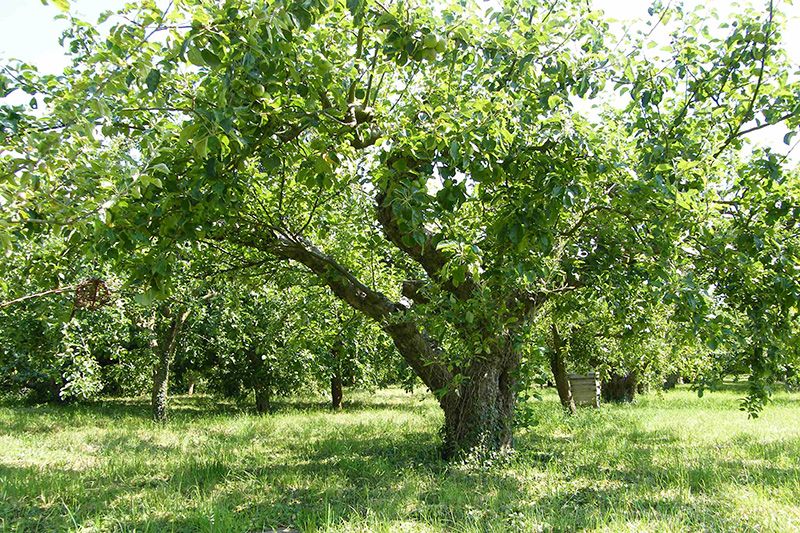Planning and traditional orchards

Orchards composed of widely spaced trees and managed without chemicals are considered a Habitat of Principal Importance (one of around 60 habitats recognised as such – see here for the full list). PTES manage the traditional orchard habitat inventory, a UK map of the habitat wherever we have located it. However, the absence of a particular traditional orchard on the habitat inventory does not mean it doesn’t qualify as priority habitat. Let us know and we will add it to the map.
Where a development affects only part of a larger area of habitat, there may be on-site mitigation, i.e. creating, improving, and securing what remains to compensate for biodiversity loss. Push for measures to be secured for the lifetime of the development through a mechanism such as a home‑owner management levy. Most habitats need ongoing funding to maintain, so one-off payments are unlikely to secure habitat for more than the first five or ten years. For example, if a community orchard is proposed, funding must be in place for the foreseeable future, otherwise enthusiasm can quickly wane.
Where habitat has been damaged or degraded prior to a planning application being submitted, there is recourse under the Environment Act 2021, which inserts Schedule 7A into the Town and Country Planning Act 1990. Clause 6 states that where actions taken after 30 January 2020 have lowered a site’s biodiversity value, the Biodiversity Net Gain calculations should be based on the site’s “biodiversity value immediately before the carrying on of the activities”. Fruit trees start to develop veteran features at around 50 years, and accordingly the Biodiversity Metric calculator will rate orchards of this age as “irreplaceable habitat” causing “unacceptable loss”. Also, the NPPF states at 180 c that “…loss or deterioration of irreplaceable habitats (such as ancient woodland and ancient or veteran trees) should be refused…”. The clause includes a caveat for “wholly exceptional reasons”, loosely defined as nationally important projects.
Local planning authorities can make a Tree Preservation Order (TPO) to protect specific trees, groups of trees or woodlands in the interests of amenity. These can be useful to prevent tree removal before or during the process of a planning application. Find out more about Tree Preservation Orders and see our Template text for a TPO Request:
Developers and other stakeholders can often make counter arguments to discredit the merits of traditional orchards. We have provided some common examples and guides for responses.
